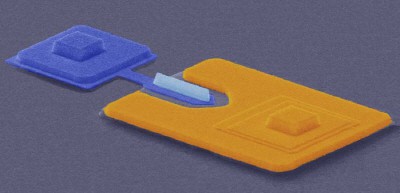A pair of physicists in the US has built the fastest ever transistor: one that can operate at a frequency of over 600 gigahertz. Developed by Walid Hafez and Milton Feng at the University of Illinois at Urbana-Champaign, the device is made from the semiconductors indium phosphide and indium gallium arsenide (Appl. Phys. Lett. 86 152101). The work demonstrates the feasibility of making transistors that can operate at frequencies of several terahertz, which could be used in ultrafast communications, high-speed computing, medical imaging and sensors.

The new device is a so-called bipolar transistor, which is very different from the more well-known field-effect transistor. In it, electrons are injected from the “emitter” terminal, travel towards the “base” and are then received by the “collector”, an arrangement that allows the device to work faster than a field-effect transistor.
Hafez and Feng have previously built a high-frequency bipolar transistor, but this earlier work focused on reducing the time it takes electrons to pass through the device by minimizing the device’s vertical thickness. Their new research further increases electron speeds through the device by slightly varying, or “grading”, the composition of the semiconductor layers. This, say the researchers, lowers the band gap in selected areas of the transistor and makes it easier for electrons to travel across the device.
The two physicists have shown their transistor can operate at a frequency of 604 gigahertz, a new record. However, according to Hafez, what is more important is that they have developed a technology that could be used to build transistors operating in the terahertz range. “Projections from our earlier high-frequency devices indicated that in order to create a transistor with a cutoff frequency of 1 terahertz, the devices would have to operate above 10,000 degrees C,” he says. “By introducing the grading into the layer structure of the device, we have been able to lower the potential operating temperature for a terahertz transistor to within an acceptable range.”
Devices operating at terahertz frequencies (the far infrared) could be used in communications applications or as sensors to detect toxic gases. They could also be used for medical imaging, since the radiation is long enough to penetrate skin and image what lies underneath.
The researchers’ next step is to show that their devices can be assembled into circuits.



